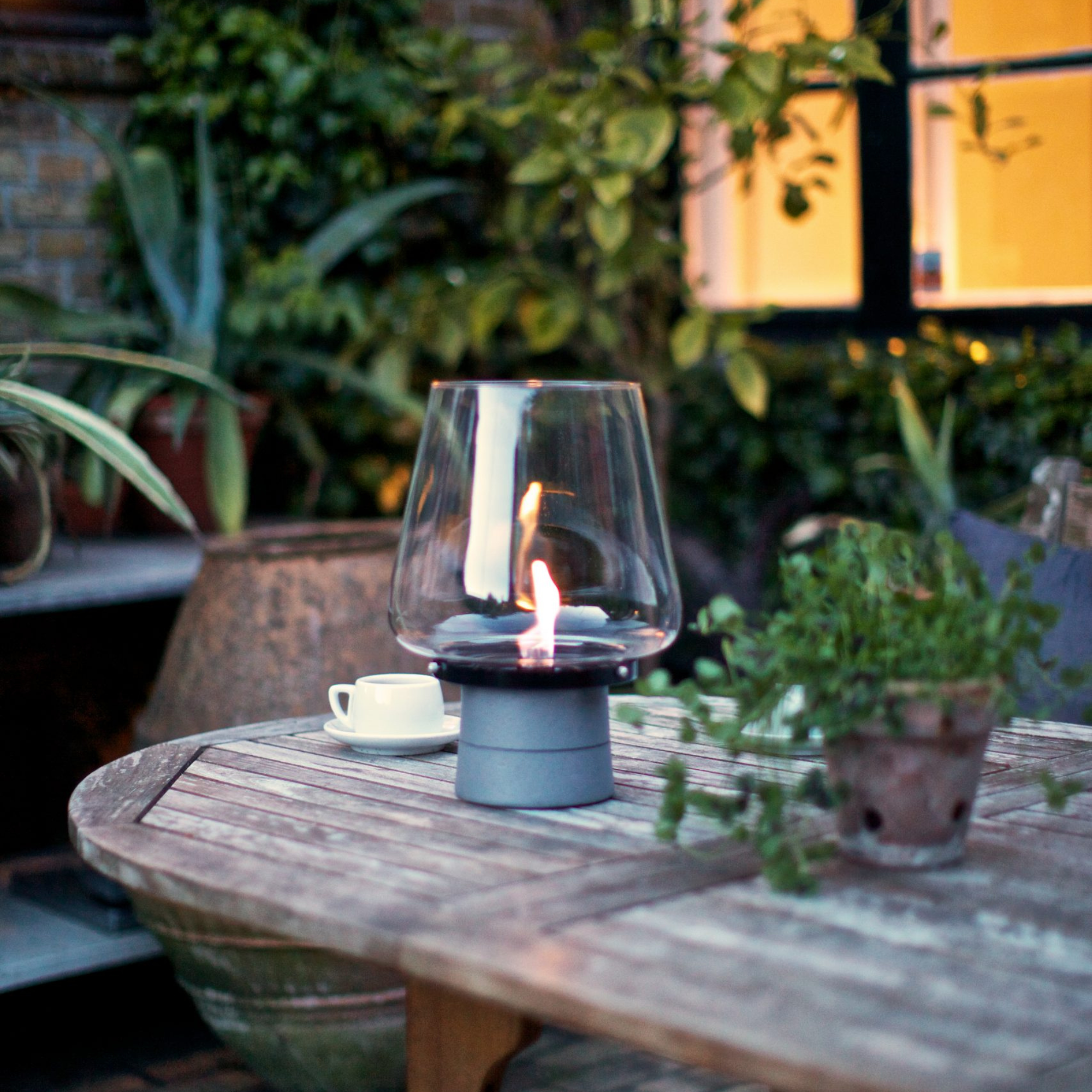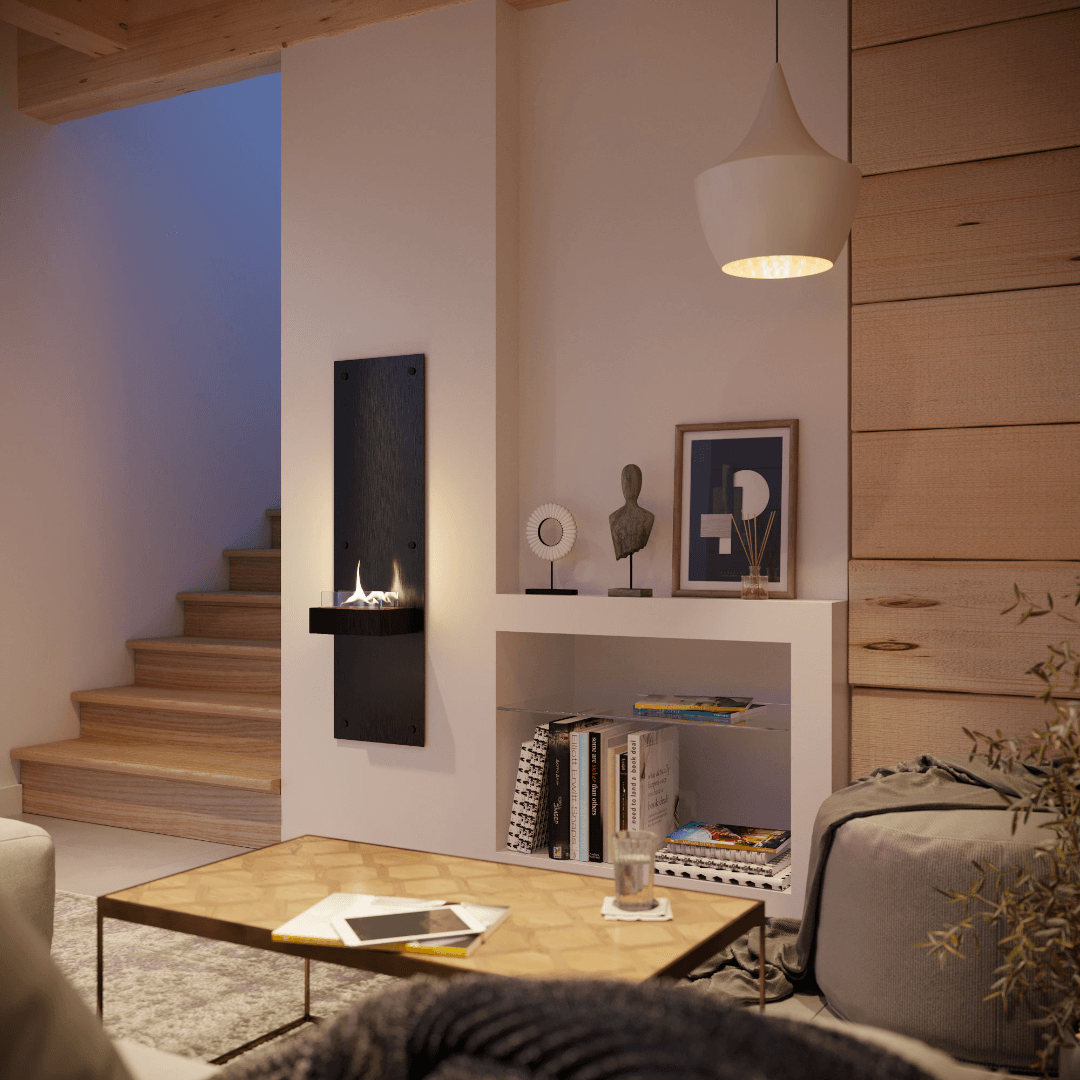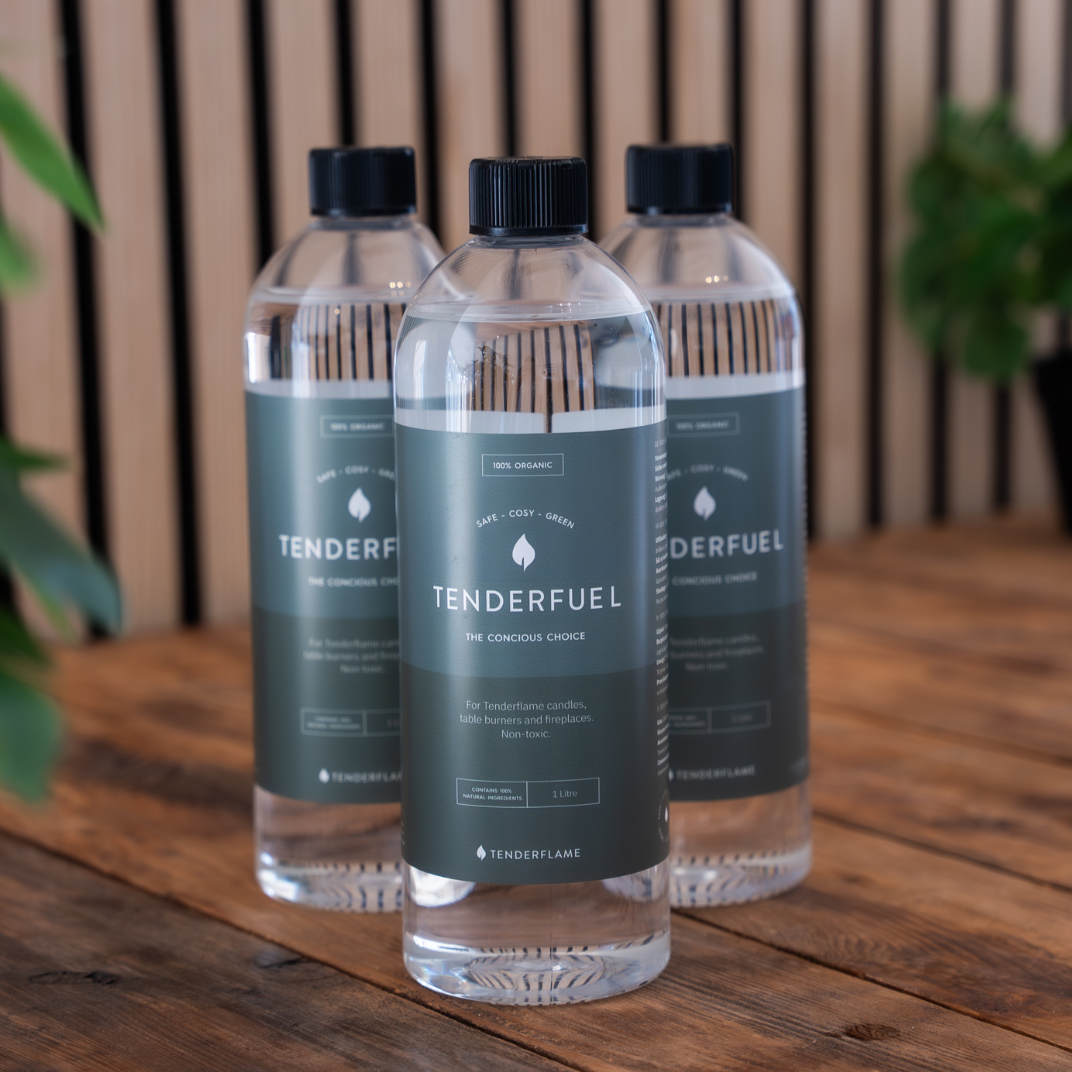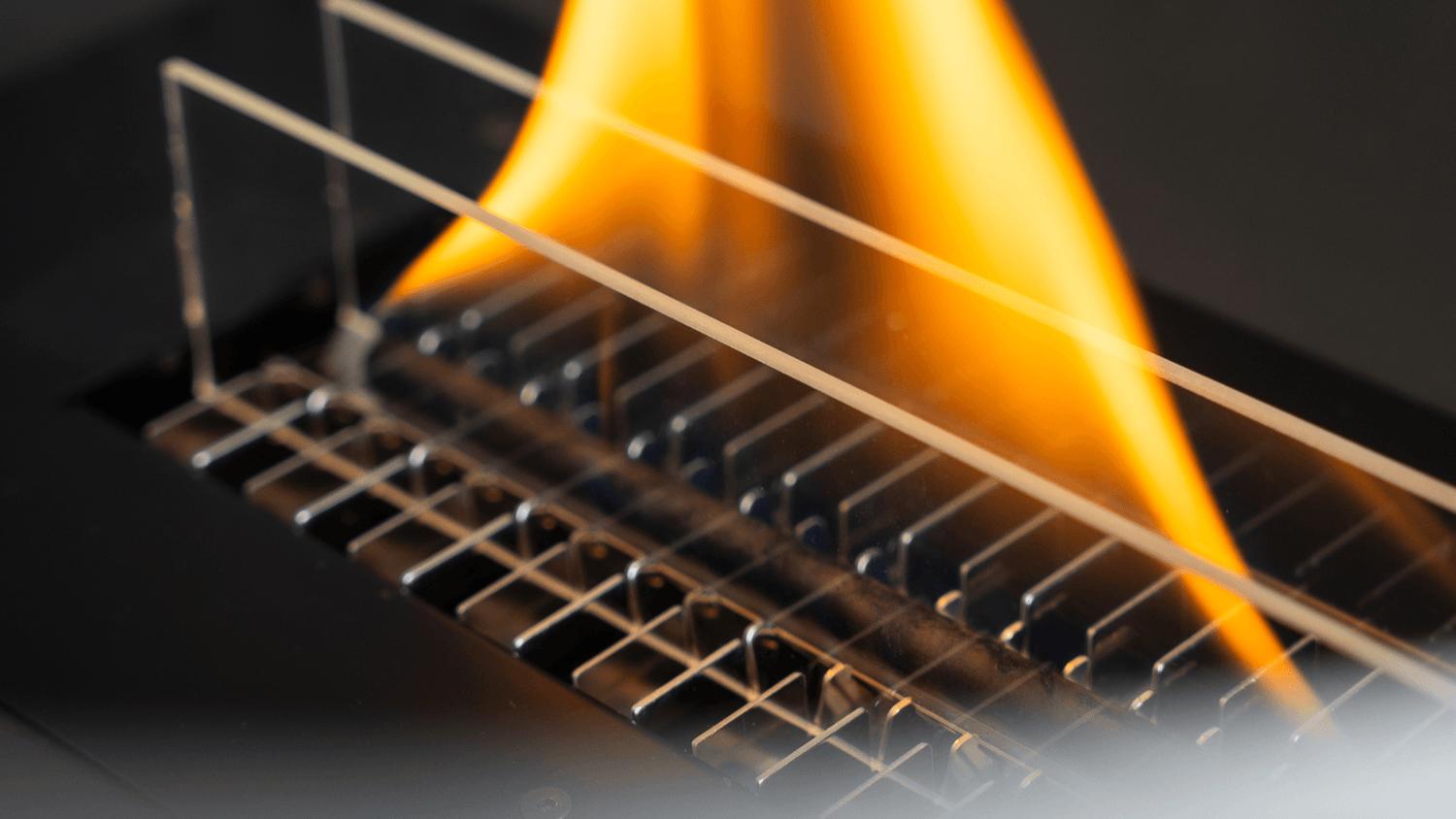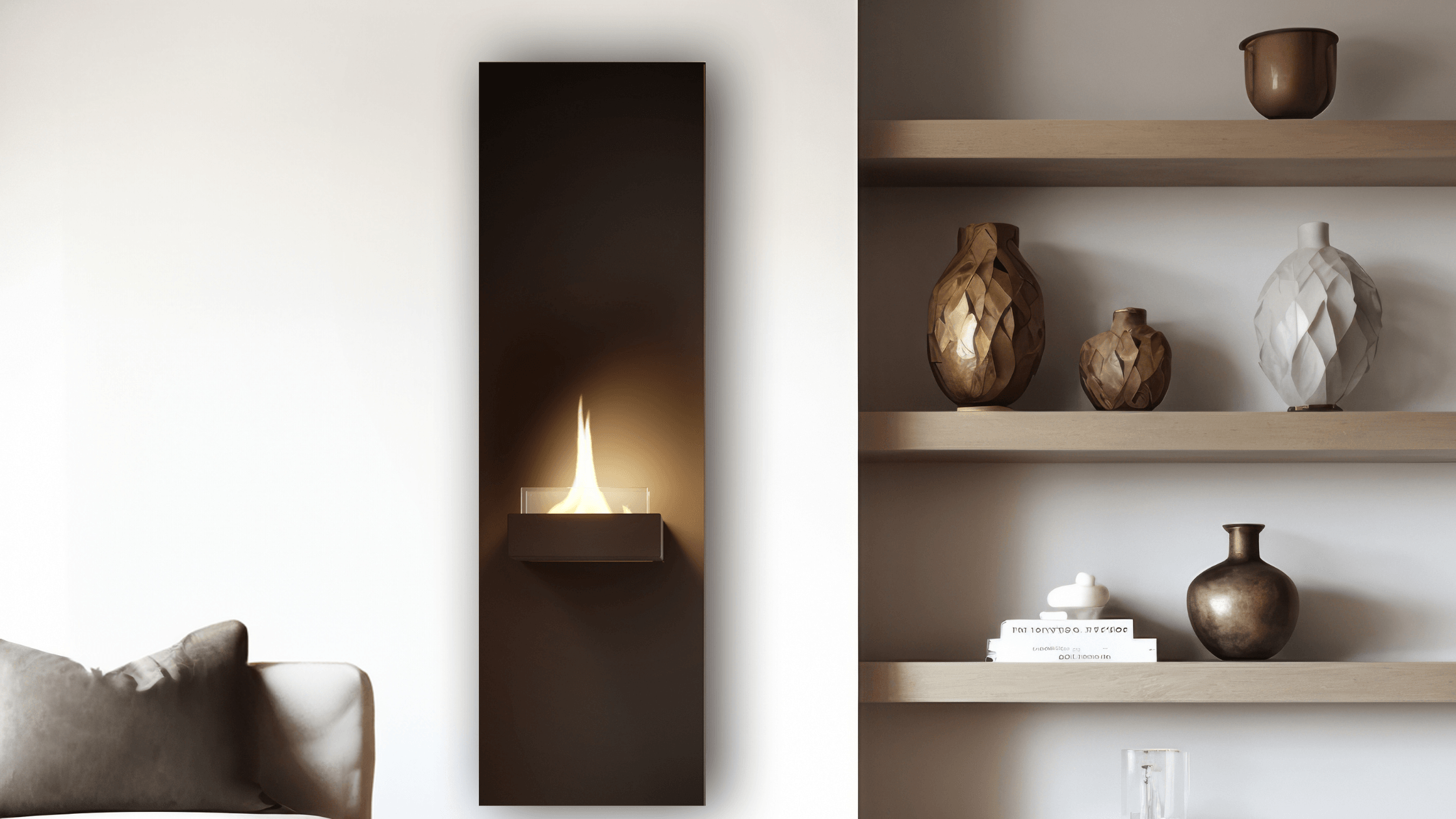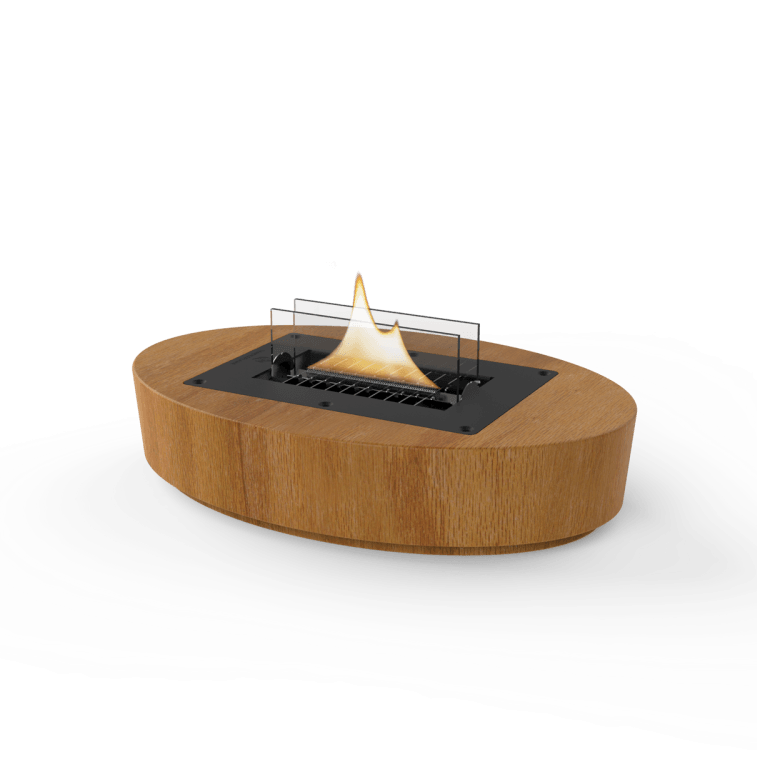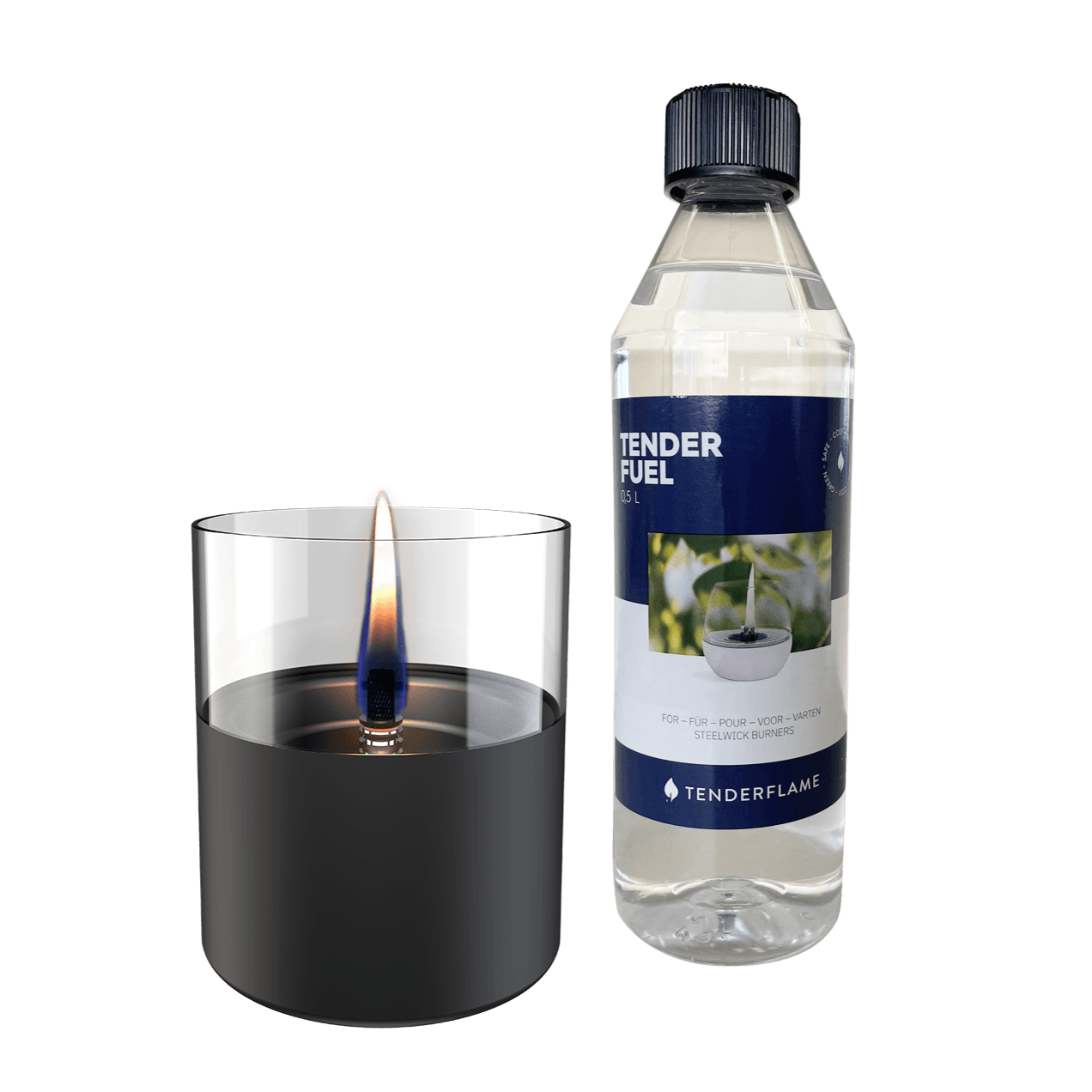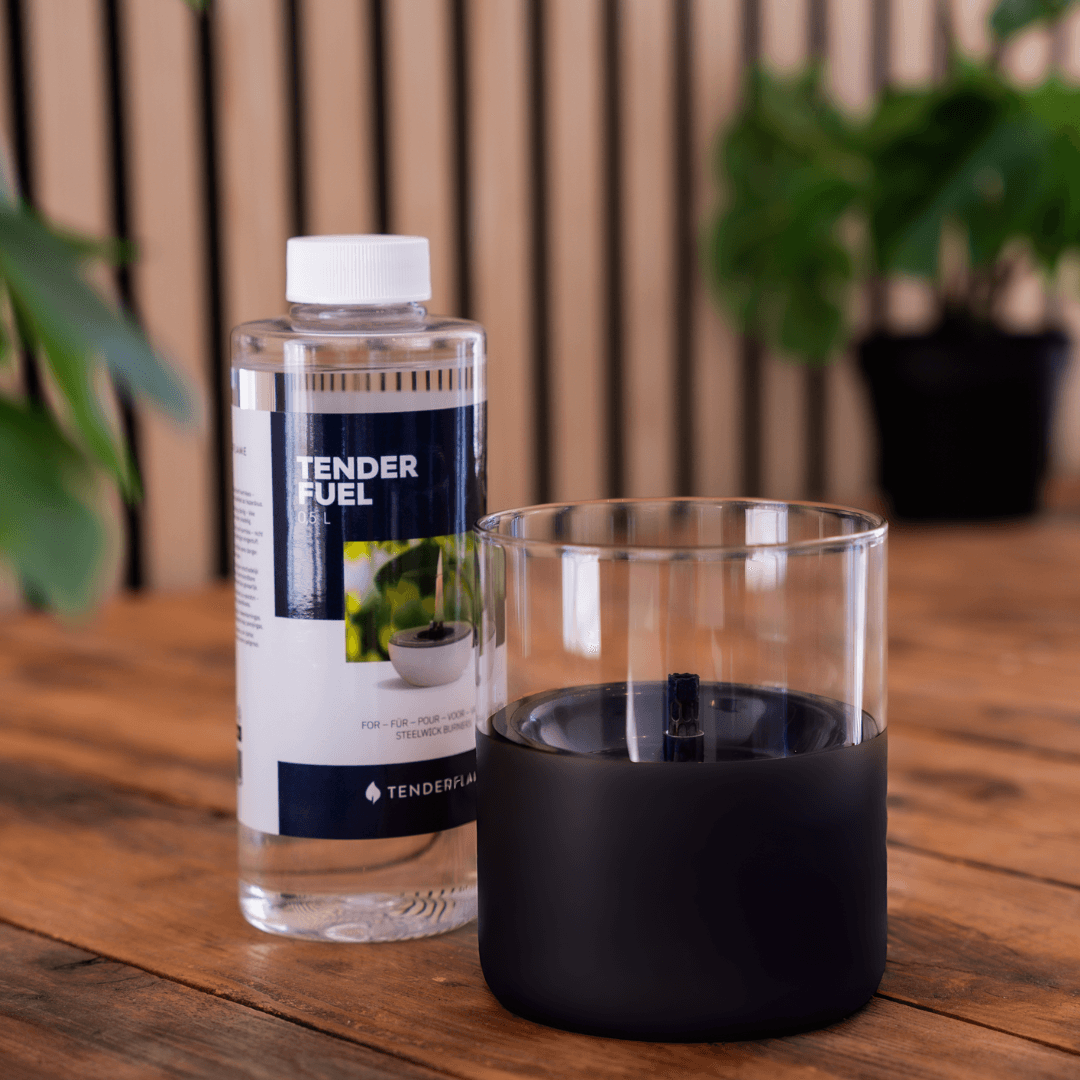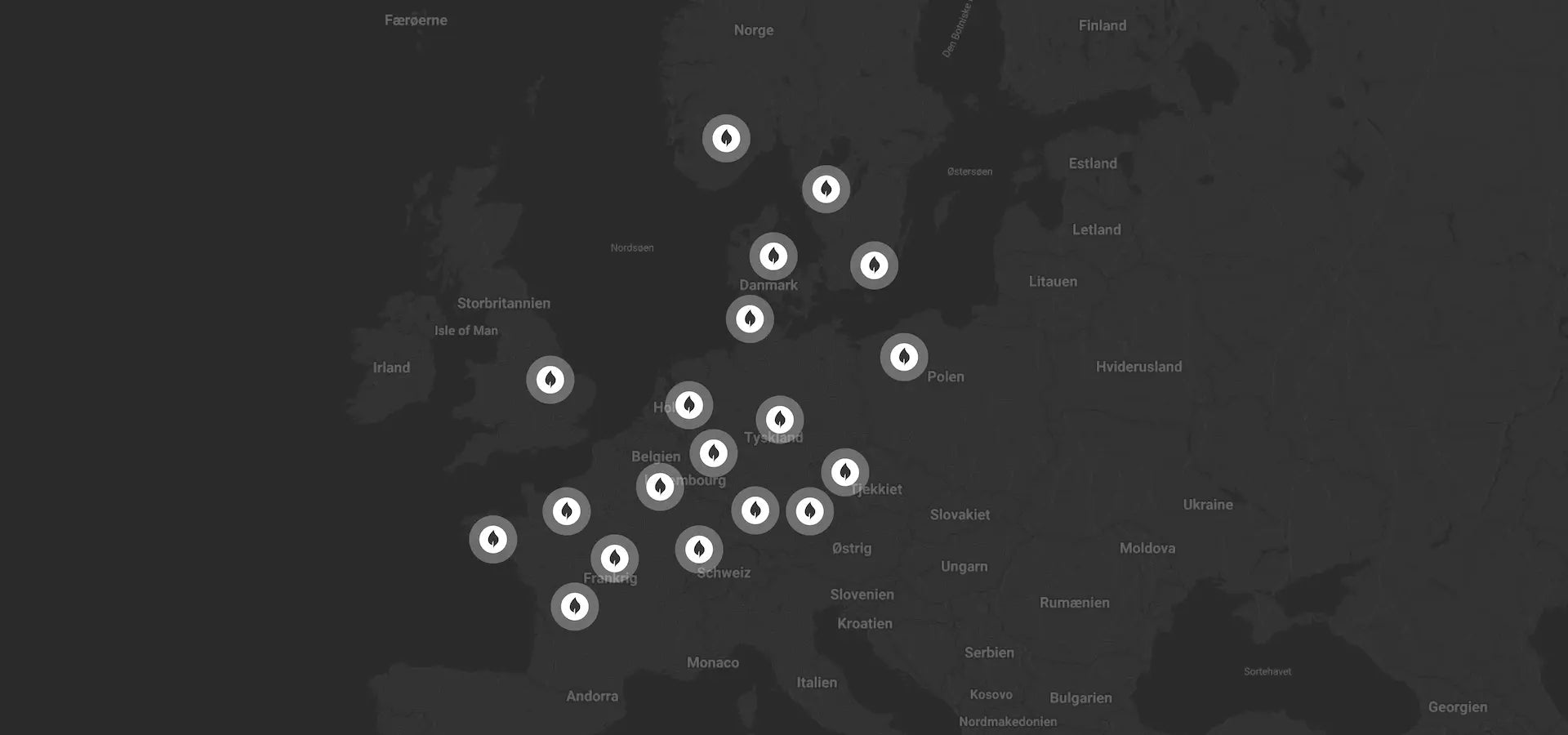When it comes to creating atmospheric fireplaces in the home, bioethanol is often seen as a popular fuel option. But before you decide to purchase a bioethanol fireplace, it is important to consider the potential dangers and disadvantages of bioethanol. Fortunately, there is a safe and clean alternative available: Tenderfuel by Tenderflame.
Disadvantages of Bio-ethanol
Despite the benefits, there are also some disadvantages of bioethanol that you should take into account:
- Less heat output : Bio-ethanol offers less heat output compared to gas-fired systems, for example. A bio-ethanol burner usually has a capacity of around 3-4 kW, which is insufficient to heat an entire room.
- Limited Burning Time : The burning time of bio-ethanol is generally limited. For a longer burning time, it is often necessary to refill the fuel tank. How long you can use a filled burner depends on the size of the burner, but on average you can enjoy a fire for about 6-7 hours with a 2-liter fireplace.
- Fuel Costs : Although bioethanol is renewable, the cost of the fuel can vary and can be more expensive in the long run than other fuels. However, currently, bioethanol is a cheaper option than gas.
- Safety precautions : Bioethanol is safe when used correctly, but it requires strict safety precautions. It is important to follow the installation instructions carefully and not to place the fireplace too close to flammable materials. In addition, sufficient distance from walls must be maintained for freestanding fireplaces.
Alternative: Tenderflame with Tenderfuel
If you are looking for a safer and cleaner alternative to bioethanol, consider Tenderflame with Tenderfuel . Tenderfuel offers several advantages over bioethanol:
- Minimal soot emissions : Tenderfuel burns cleanly and produces hardly any soot, which ensures a better indoor climate.
- Safety : Tenderfuel only burns in combination with the patented steel wick, significantly reducing the risk of fire and explosion.
- Air quality : Tenderfuel contributes to better indoor air quality through clean combustion. Tenderflame fireplaces therefore do not require a flue!
- Ease of use : Tenderfuel requires less maintenance and is easier to use than bio-ethanol fireplaces. A Tenderflame can even be refilled while it is burning!
Bioethanol offers advantages such as environmental friendliness, easy installation and ease of use. However, it is important to also consider the disadvantages such as limited heat output, burning time and fuel costs. For a safer and cleaner alternative, Tenderflame with Tenderfuel is the perfect solution.

